
The Minoprio Collection: British Design in the Arts & Crafts Tradition | 669
Live Online | Edinburgh
PAST AUCTION
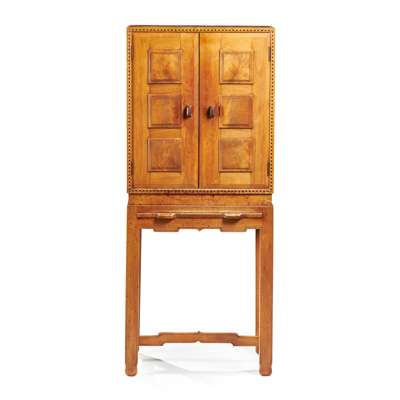
LOT 1
ANTHONY MINOPRIO (1900–1988) (DESIGNER), PETER WAALS (1870-1937) (MAKER)
COCKTAIL CABINET, CIRCA 1935
SOLD FOR £6,250
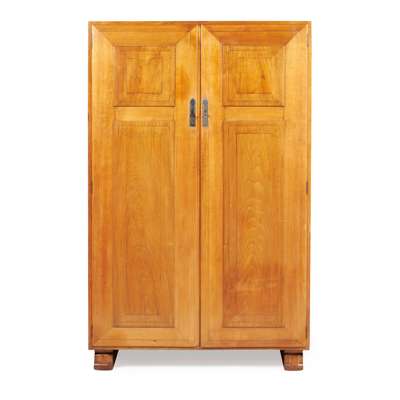
LOT 2
ANTHONY MINOPRIO (1900–1988) (DESIGNER), PETER WAALS (1870-1937) (MAKER)
WARDROBE, CIRCA 1935
SOLD FOR £7,500
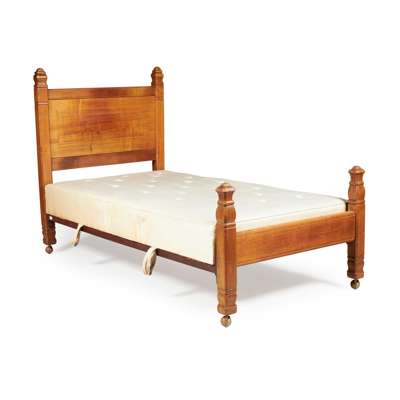
LOT 3
ANTHONY MINOPRIO (1900–1988) (DESIGNER), PETER WAALS (1870-1937) (MAKER)
BED, CIRCA 1935
SOLD FOR £813
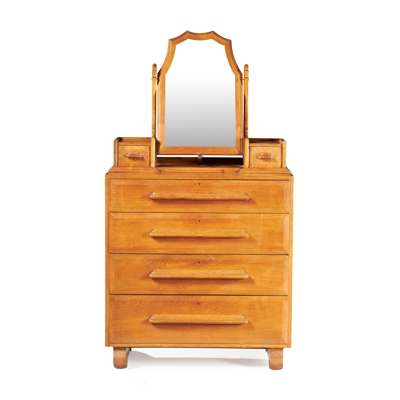
LOT 4
ANTHONY MINOPRIO (1900–1988) (DESIGNER), PETER WAALS (1870-1937) (MAKER)
DRESSING CHEST & MIRROR, CIRCA 1935
SOLD FOR £3,000

LOT 5
ANTHONY MINOPRIO (1900–1988) (DESIGNER), PETER WAALS (1870-1937) (MAKER), JOHN SKEAPING R.A. (1901-1980) (CARVER)
CELLARETTE, CIRCA 1935
SOLD FOR £3,000
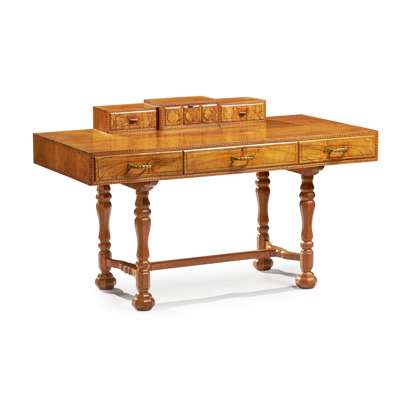
LOT 6
ANTHONY MINOPRIO (1900–1988) (DESIGNER), PETER WAALS (1870-1937) (MAKER)
WRITING DESK, CIRCA 1930
SOLD FOR £9,375
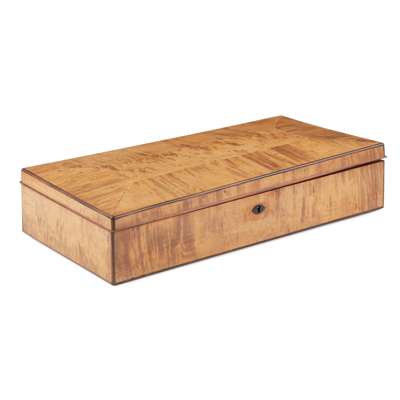
LOT 7
PETER WAALS (1870-1937)
STATIONERY BOX, CIRCA 1935
SOLD FOR £1,500
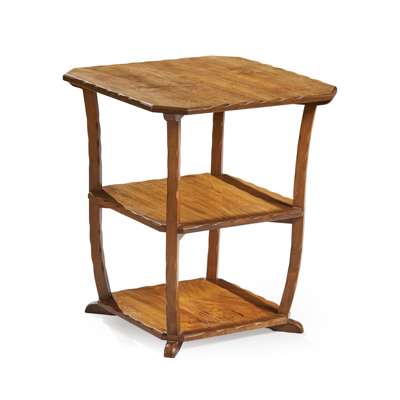
LOT 8
ANTHONY MINOPRIO (1900–1988) (DESIGNER), PETER WAALS (1870-1937) (MAKER)
THREE-TIER OCCASIONAL TABLE, CIRCA 1935
SOLD FOR £3,250
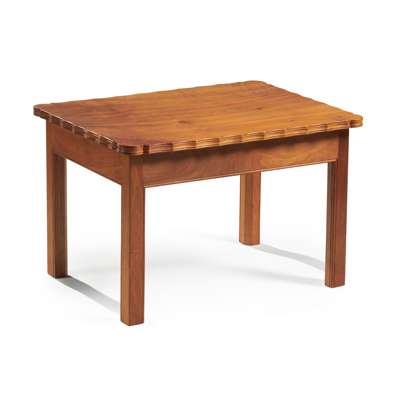
LOT 9
PETER WAALS (1870-1937)
OCCASIONAL TABLE, CIRCA 1935
SOLD FOR £2,125
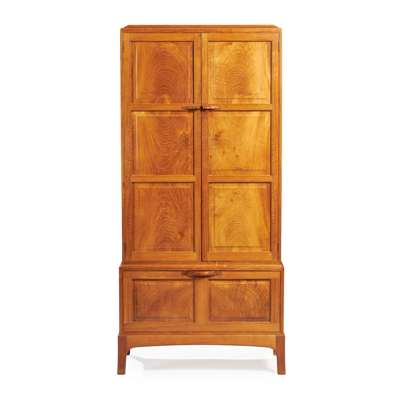
LOT 10
EDWARD BARNSLEY (1900-1987)
STANDING SHOE CUPBOARD, CIRCA 1952
SOLD FOR £30,000
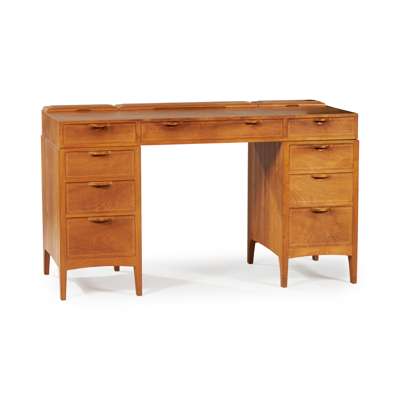
LOT 11
EDWARD BARNSLEY (1900-1987)
TWIN-PEDESTAL DESK, CIRCA 1973
SOLD FOR £13,750

LOT 12
EDWARD BARNSLEY (1900-1987)
SMALL ARMCHAIR, CIRCA 1964
SOLD FOR £813
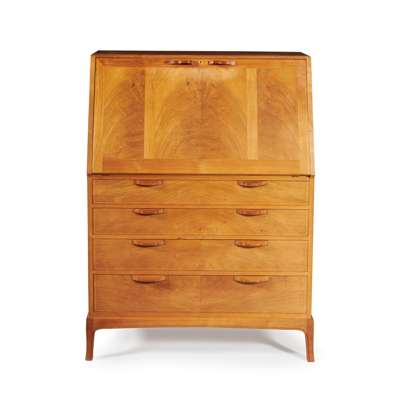
LOT 13
EDWARD BARNSLEY (1900-1987)
BUREAU, CIRCA 1964
SOLD FOR £2,500
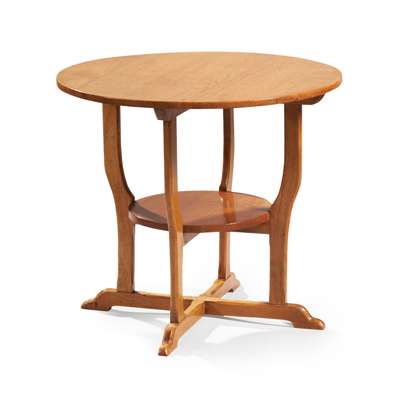
LOT 14
PETER WAALS (1870-1937)
TWO-TIER TABLE, CIRCA 1930
SOLD FOR £12,500

LOT 15
HUGH BIRKETT (1919-2002)
TABLE LAMP, CIRCA 1950
SOLD FOR £8,750
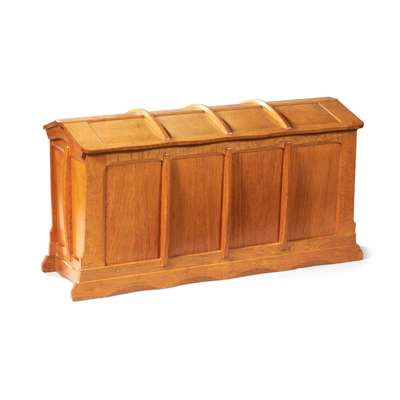
LOT 16
OLIVER MOREL (1916-2003)
BLANKET CHEST, DATED 1969
SOLD FOR £4,750

LOT 17
STANLEY WEBB DAVIES (1894–1978)
OCCASIONAL TABLE, DATED 1929
SOLD FOR £5,500
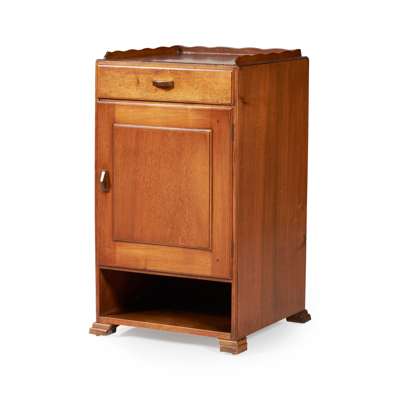
LOT 18
COTSWOLD SCHOOL
CABINET, CIRCA 1930
SOLD FOR £1,750
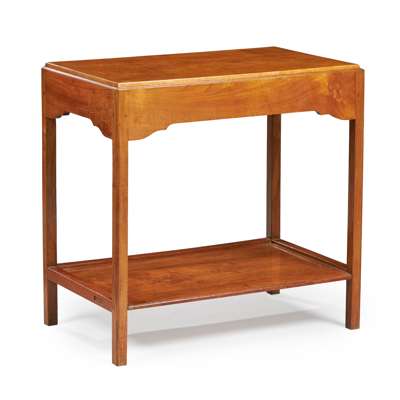
LOT 19
COTSWOLD SCHOOL
TWO-TIER OCCASIONAL TABLE, CIRCA 1930
SOLD FOR £938
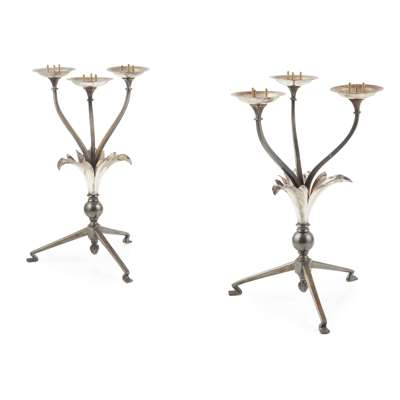
LOT 20
W.A.S. BENSON (1854-1924)
PAIR OF THREE-LIGHT CANDLESTICKS, CIRCA 1900
SOLD FOR £3,750
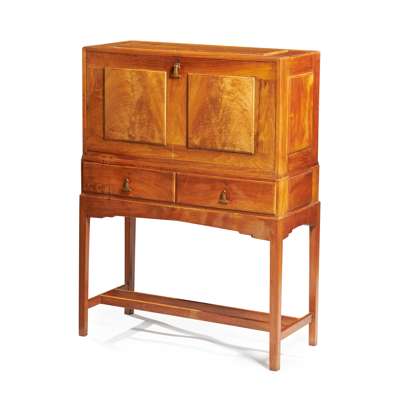
LOT 22
EDWARD BARNSLEY (1900-1987)
SECRETAIRE DESK, CIRCA 1933
SOLD FOR £22,500

LOT 23
PETER WAALS (1870-1937)
CABINET BOOKCASE, CIRCA 1929
SOLD FOR £12,500

LOT 24
EDWARD BARNSLEY (1900-1987)
DRESSER, CIRCA 1935
SOLD FOR £22,500
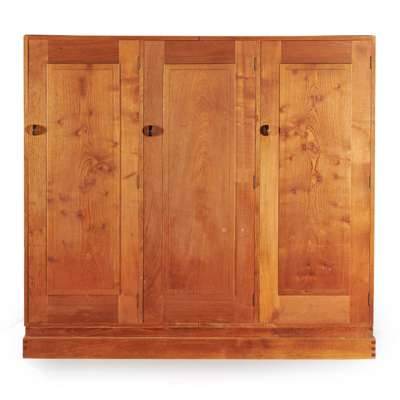
LOT 25
PETER WAALS (1870-1937)
WARDROBE, CIRCA 1935
SOLD FOR £2,250
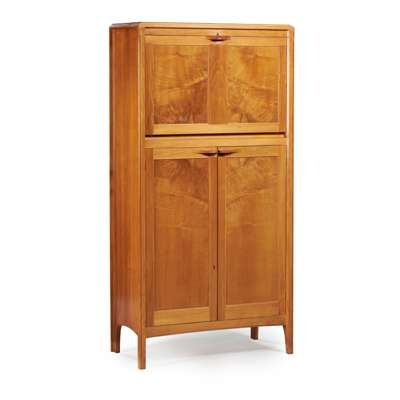
LOT 26
EDWARD BARNSLEY (1900-1987)
DRINKS/ RECORD CABINET, CIRCA 1965
SOLD FOR £3,500
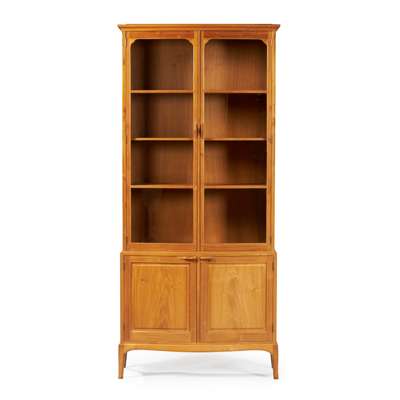
LOT 27
EDWARD BARNSLEY (1900-1987)
BOW-FRONT DISPLAY CABINET, CIRCA 1972
SOLD FOR £3,250

LOT 28
EDWARD BARNSLEY (1900-1987)
PAIR OF DISPLAY CABINETS, CIRCA 1966
SOLD FOR £13,750
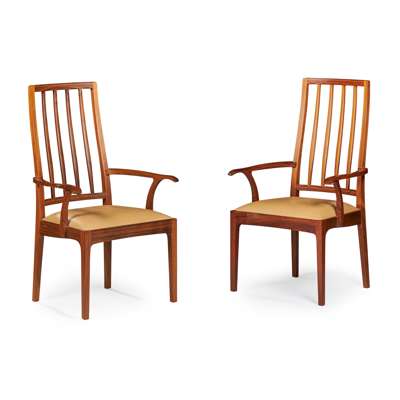
LOT 29
EDWARD BARNSLEY (1900-1987)
PAIR OF TALL ARMCHAIRS, CIRCA 1980
SOLD FOR £5,000
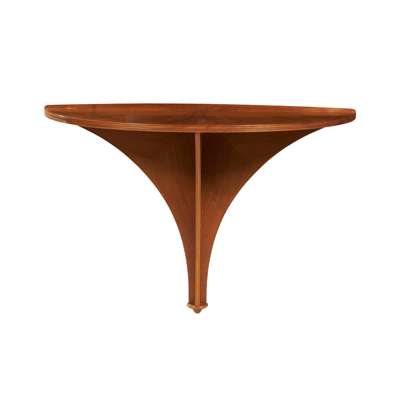
LOT 30
EDWARD BARNSLEY (1900-1987)
HANGING CONSOLE TABLE, CIRCA 1981
SOLD FOR £2,750
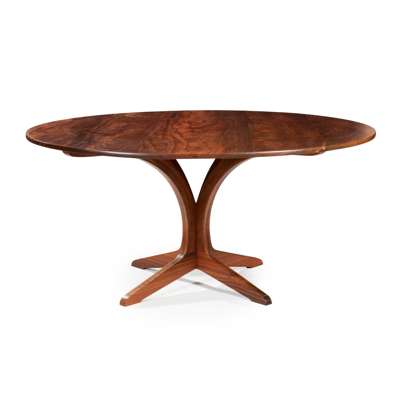
LOT 31
EDWARD BARNSLEY (1900-1987)
ROUND DINING TABLE, CIRCA 1978
SOLD FOR £3,500
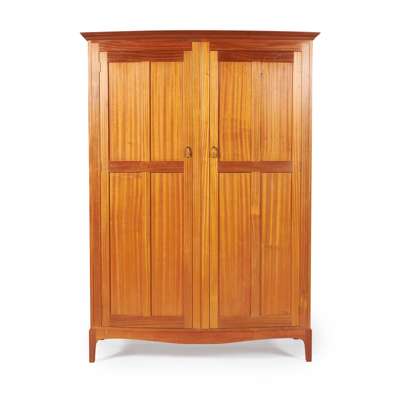
LOT 32
EDWARD BARNSLEY (1900-1987)
PAIR OF BOW-FRONT WARDROBES, CIRCA 1980
SOLD FOR £3,000
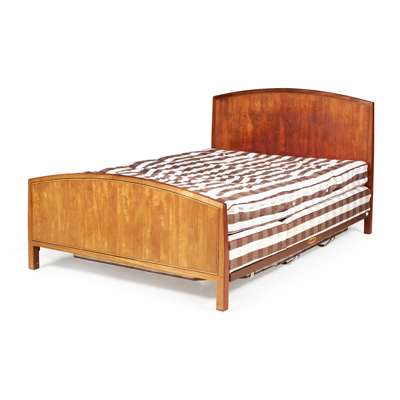
LOT 33
EDWARD BARNSLEY (1900-1987)
DOUBLE BED, CIRCA 1962
SOLD FOR £1,375
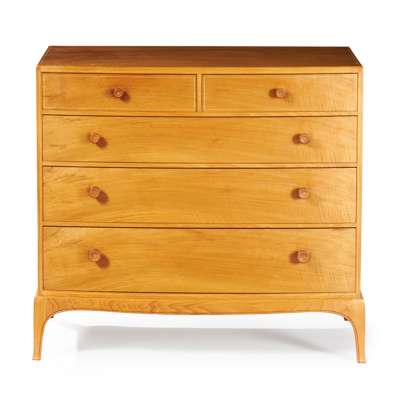
LOT 34
EDWARD BARNSLEY (1900-1987)
BOW-FRONT CHEST OF DRAWERS, DATED 1966
SOLD FOR £5,000
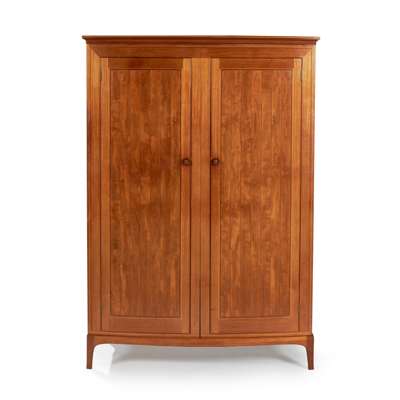
LOT 35
EDWARD BARNSLEY (1900-1987)
BOW-FRONT WARDROBE, CIRCA 1950
SOLD FOR £2,750
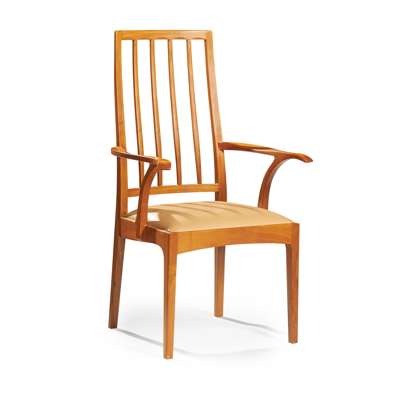
LOT 36
EDWARD BARNSLEY (1900-1987)
TALL ARMCHAIR, CIRCA 1981
SOLD FOR £1,125
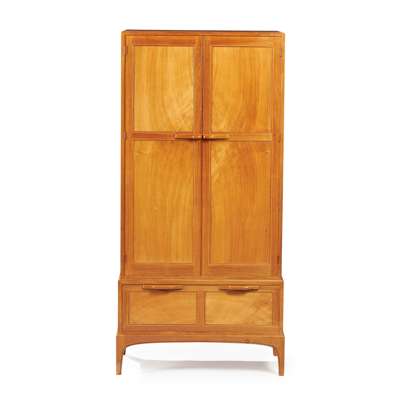
LOT 37
EDWARD BARNSLEY (1900-1987)
STANDING SHOE CUPBOARD, CIRCA 1966
SOLD FOR £5,750
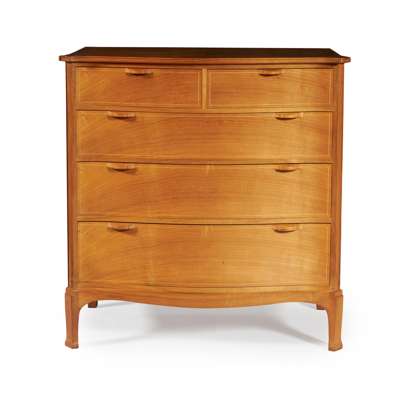
LOT 38
EDWARD BARNSLEY (1900-1987)
SERPENTINE CHEST OF DRAWERS, CIRCA 1982
SOLD FOR £5,250

LOT 39
EDWARD BARNSLEY (1900-1987)
ROUND TABLE, CIRCA 1972
SOLD FOR £2,000

LOT 40
EDWARD BARNSLEY (1900-1987)
SET OF TEN DINING CHAIRS, CIRCA 1981
SOLD FOR £10,625
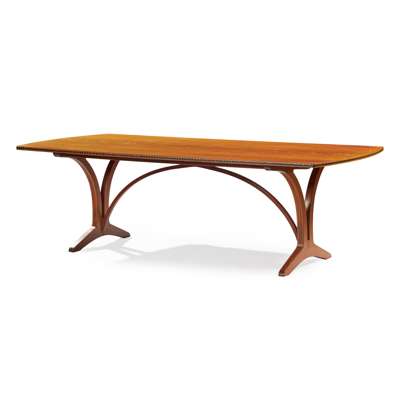
LOT 41
EDWARD BARNSLEY (1900-1987)
DINING TABLE, CIRCA 1980
SOLD FOR £2,693
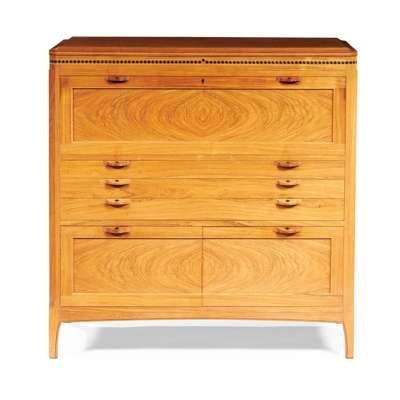
LOT 42
EDWARD BARNSLEY (1900-1987)
WRITING CABINET, CIRCA 1972
SOLD FOR £22,500
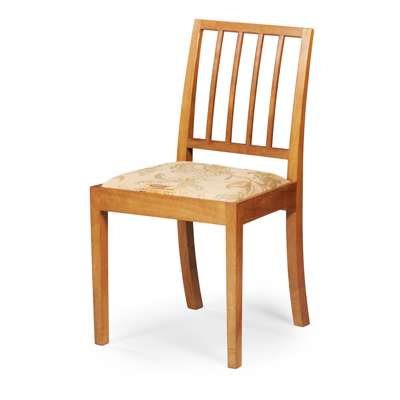
LOT 43
EDWARD BARNSLEY (1900-1987)
CHAIR, CIRCA 1950
SOLD FOR £475
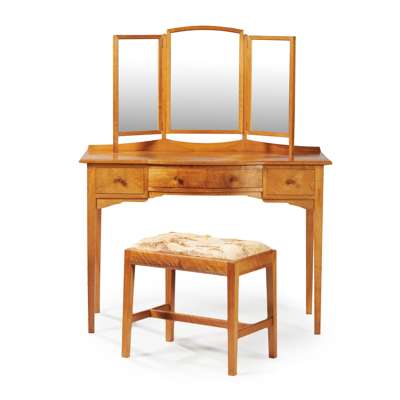
LOT 44
EDWARD BARNSLEY (1900-1987)
DRESSING TABLE, CIRCA 1950
SOLD FOR £3,500
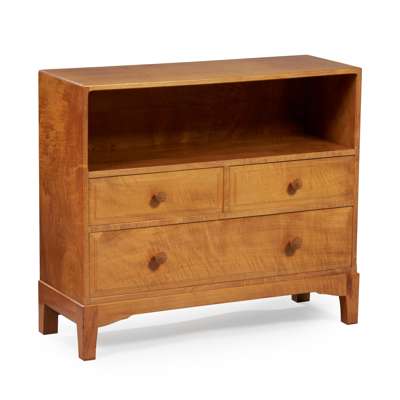
LOT 45
EDWARD BARNSLEY (1900-1987)
BOOKCASE CHEST, CIRCA 1950
SOLD FOR £2,500
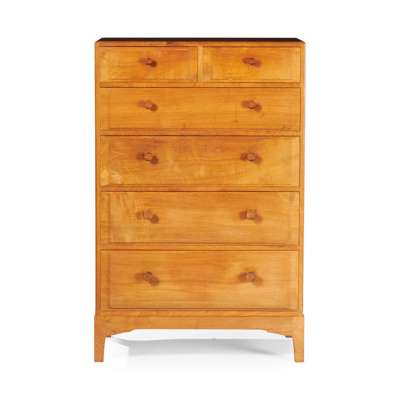
LOT 46
EDWARD BARNSLEY (1900-1987)
TALL CHEST OF DRAWERS, CIRCA 1950
SOLD FOR £5,250
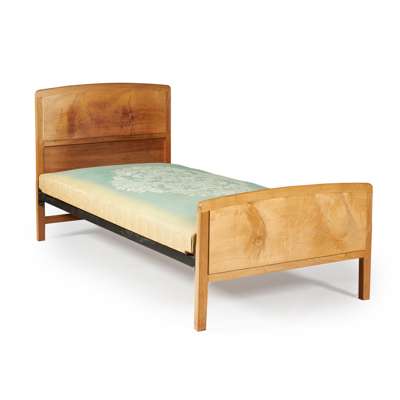
LOT 47
EDWARD BARNSLEY (1900-1987)
PAIR OF SINGLE BEDS, CIRCA 1950
SOLD FOR £1,250
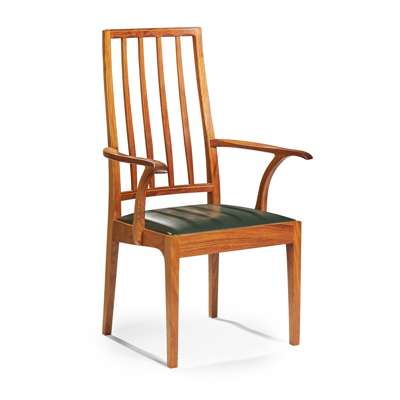
LOT 48
EDWARD BARNSLEY (1900-1987)
TALL ARMCHAIR, CIRCA 1975
SOLD FOR £1,188
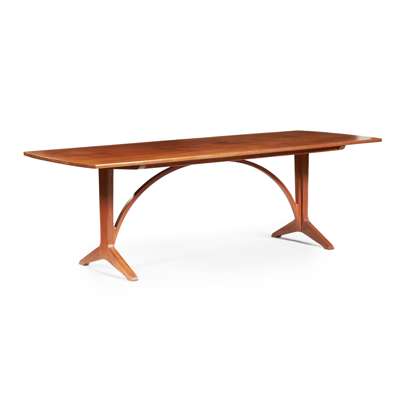
LOT 49
EDWARD BARNSLEY (1900-1987)
DINING TABLE, CIRCA 1980
SOLD FOR £1,500
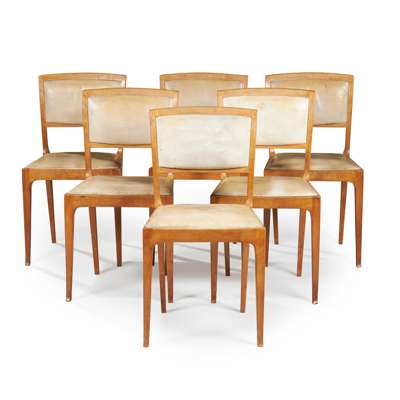
LOT 50
EDWARD BARNSLEY (1900-1987)
SET OF SIX DINING CHAIRS, CIRCA 1970
SOLD FOR £4,000
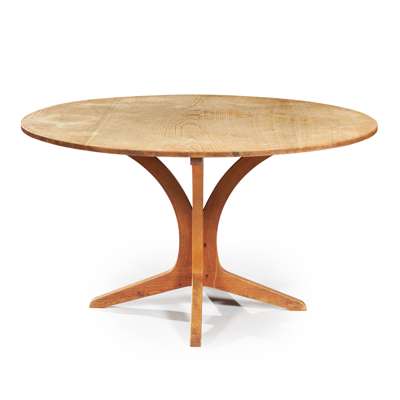
LOT 51
EDWARD BARNSLEY (1900-1987)
ROUND DINING TABLE, CIRCA 1977
SOLD FOR £4,750
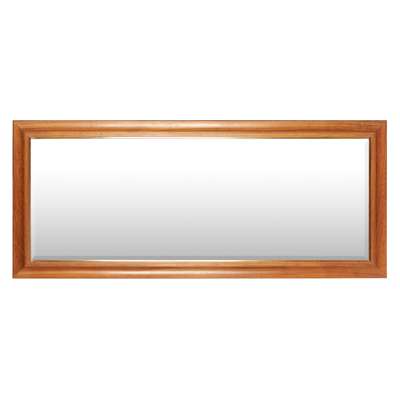
LOT 52
EDWARD BARNSLEY (1900-1987)
WALL MIRROR, CIRCA 1978
SOLD FOR £1,063
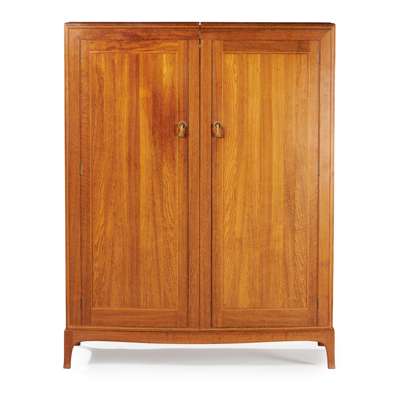
LOT 53
EDWARD BARNSLEY (1900-1987)
BOW-FRONT WARDROBE, CIRCA 1956
SOLD FOR £9,375
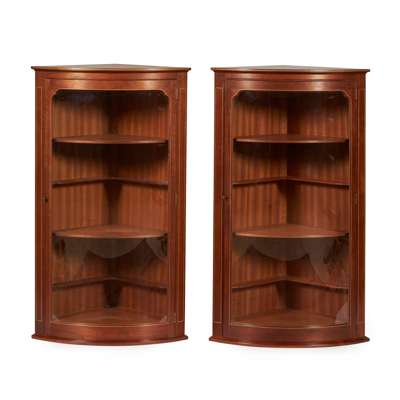
LOT 54
EDWARD BARNSLEY (1900-1987)
PAIR OF HANGING CORNER CUPBOARDS, CIRCA 1978
SOLD FOR £2,375
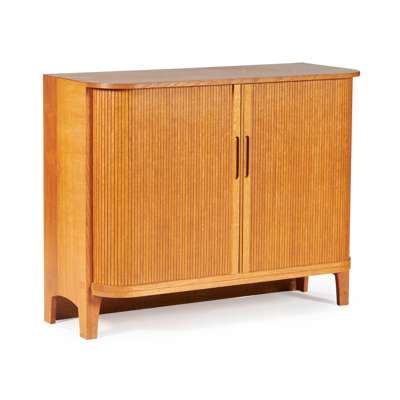
LOT 55
EDWARD BARNSLEY (1900-1987)
TOY CUPBOARD, CIRCA 1970
SOLD FOR £2,250
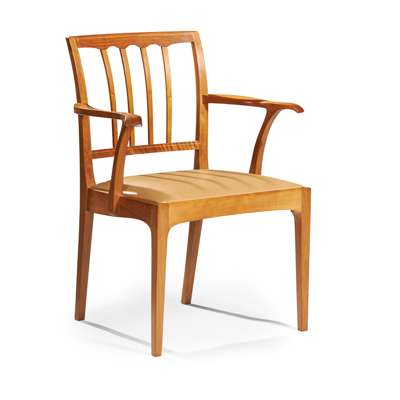
LOT 56
EDWARD BARNSLEY (1900-1987)
ARMCHAIR, CIRCA 1981
SOLD FOR £1,375
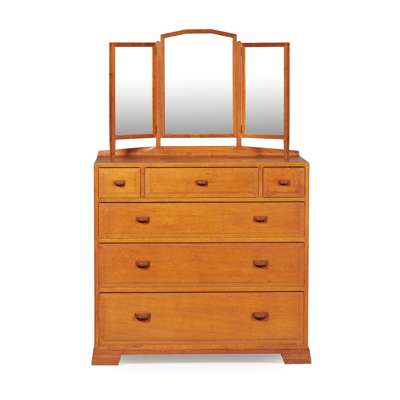
LOT 57
EDWARD BARNSLEY (1900-1987)
DRESSING CHEST, CIRCA 1950
SOLD FOR £2,125
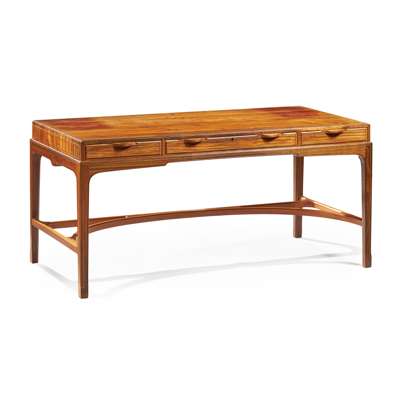
LOT 58
EDWARD BARNSLEY (1900-1987)
DESK, CIRCA 1981
SOLD FOR £18,750
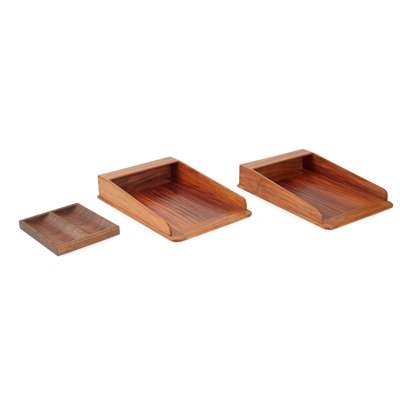
LOT 59
EDWARD BARNSLEY (1900-1987)
PAIR OF STATIONERY TRAYS, CIRCA 1982
SOLD FOR £750

LOT 60
EDWARD BARNSLEY (1900-1987) AND JON BARNSLEY (1930-2004)
WASTE PAPER BOX, CIRCA 1983
SOLD FOR £1,500
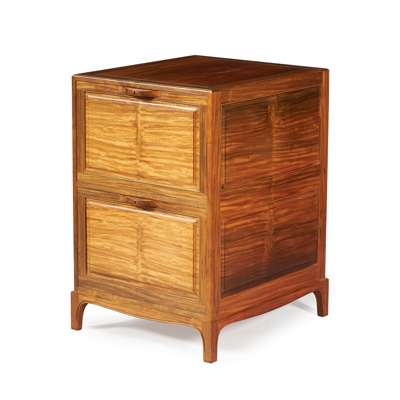
LOT 61
EDWARD BARNSLEY (1900-1987)
FILING CABINET, CIRCA 1981
SOLD FOR £5,250
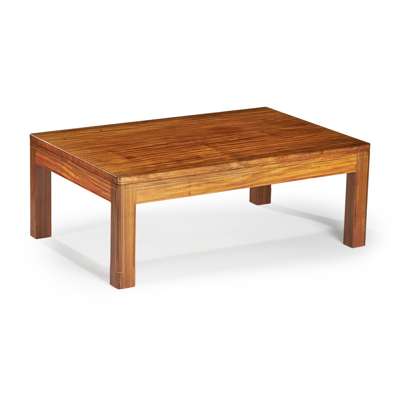
LOT 62
EDWARD BARNSLEY (1900-1987)
LOW COFFEE TABLE, CIRCA 1981
SOLD FOR £2,125
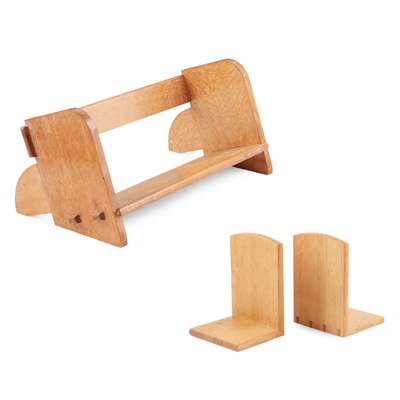
LOT 63
W. J. TANNER
BOOK TROUGH, CIRCA 1970
SOLD FOR £500
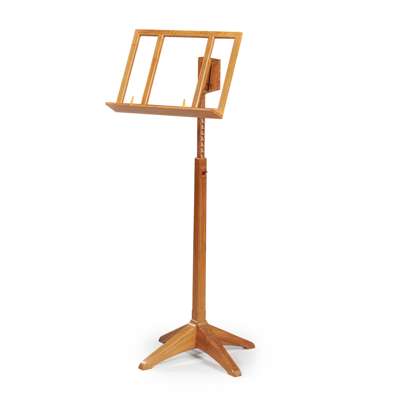
LOT 64
JON BARNSLEY (1930-2004) FOR THE EDWARD BARNSLEY WORKSHOP
ADJUSTABLE MUSIC STAND, CIRCA 1987
SOLD FOR £2,750
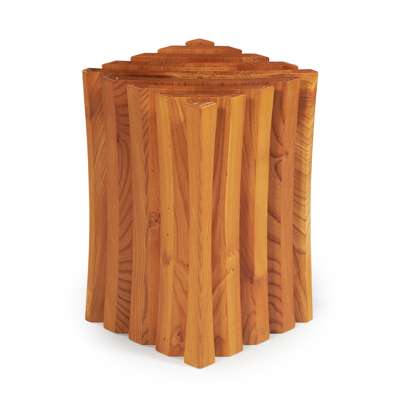
LOT 65
JAMES RYAN FOR THE EDWARD BARNSLEY WORKSHOP
STOOL/ TABLE, CIRCA 2005
SOLD FOR £1,375
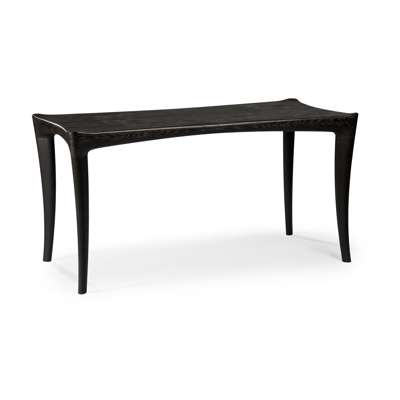
LOT 66
JAMES RYAN FOR THE EDWARD BARNSLEY WORKSHOP
WRITING TABLE, DATED 2015
SOLD FOR £6,875


